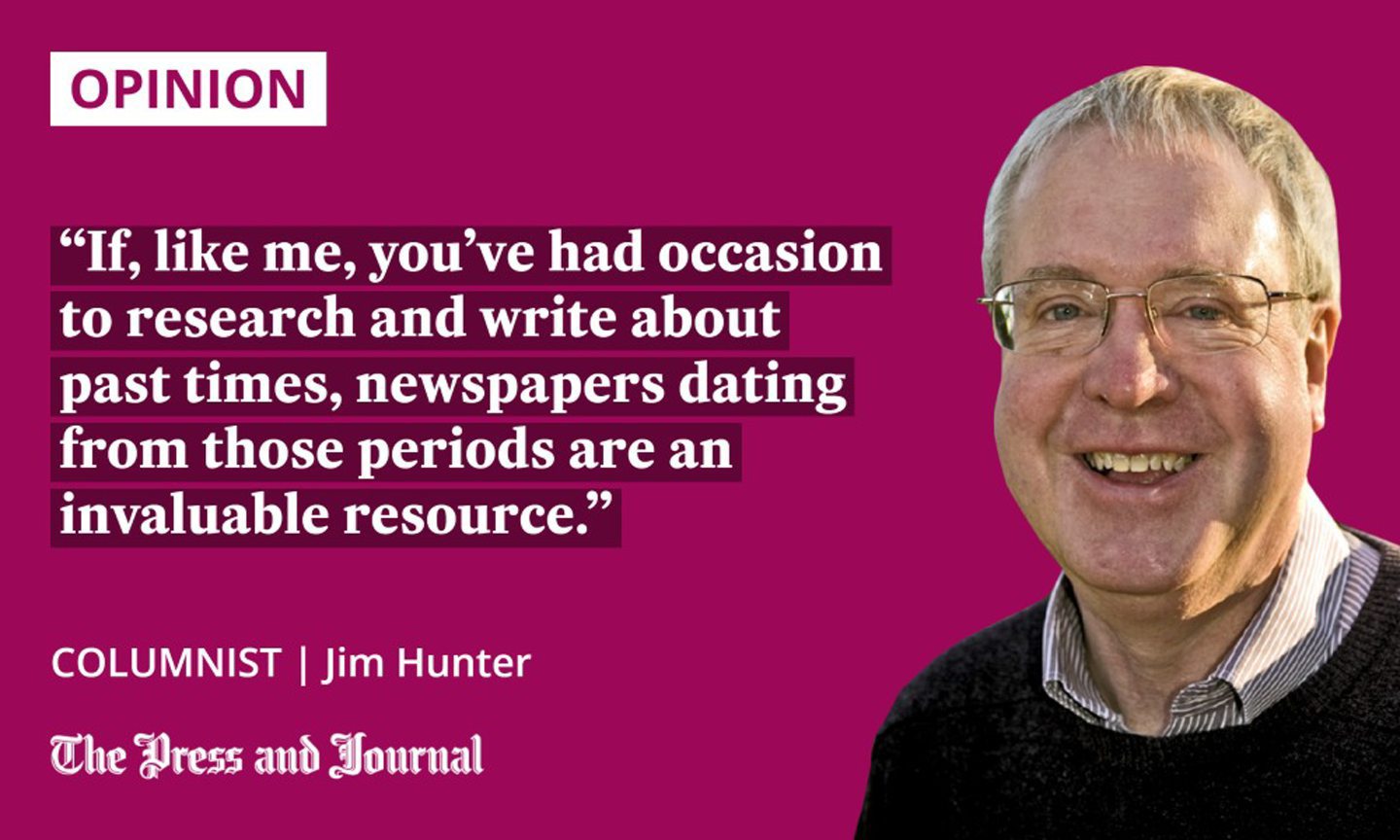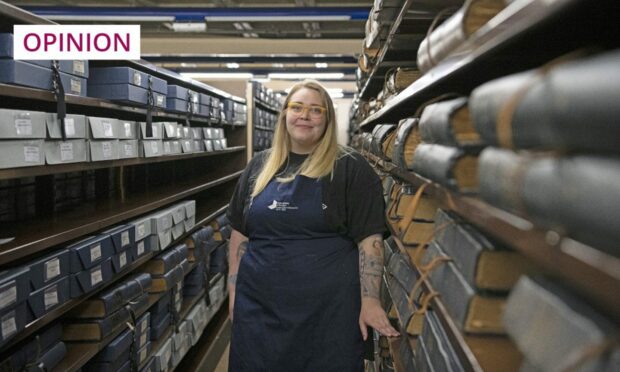Newspapers weren’t designed to last, but we should fight to protect the surviving copies that shed light on past events, writes Jim Hunter.
Among more striking complaints handled by P&J Readers’ Ombudsman Joe Churcher, as Joe noted in a recent column, is one to the effect that, because the paper doesn’t burn as well as it did, it has ceased to be much good for fire-lighting purposes.
I can’t comment. Years have passed since I last put a match to a crumpled set of pages from the previous day’s P&J and watched the resulting flames ignite the kindling and the coal piled on top.
But, the many millions of P&J copies that must have gone up chimneys came to mind when, earlier this month, the paper carried news of a funding appeal from the National Library of Scotland (NLS).
 The Edinburgh-based NLS is looking to raise at least £50,000 to digitise some part of its newspaper collection, thus preserving it, and making it accessible to anyone with an internet connection. That collection consists of the vanishingly few copies of this and other newspapers – often from centuries back – that weren’t burned, thrown away or otherwise disposed of.
The Edinburgh-based NLS is looking to raise at least £50,000 to digitise some part of its newspaper collection, thus preserving it, and making it accessible to anyone with an internet connection. That collection consists of the vanishingly few copies of this and other newspapers – often from centuries back – that weren’t burned, thrown away or otherwise disposed of.
“Nothing is as dead,” it’s been said, “as yesterday’s news.” Maybe. But if, like me, you’ve had occasion to research and write about past times, newspapers dating from those periods are an invaluable resource.
Discovering tragic details of Christmas Day, 1806
When putting together the paperback version of my most recent book, for example, it was to long ago editions of The P&J I turned for some insight into a tragedy involving one of the families the book features. This tragedy had its origins in a ferocious storm that swept across the north of Scotland on Christmas Day, 1806.
In its home city, the Aberdeen Journal reported “this most tremendous gale from the south-west had all the appearance and force of a tornado”. Homes were “thrown down and destroyed”, while, in the surrounding countryside, “the mischief done was beyond calculation: thatched houses unroofed; barns and stables blown down; stacks of corn and hay scattered; and an immense quantity of large and valuable timber torn from the roots”.
At sea, meanwhile, vessel after vessel had been sunk or wrecked. At least six ships, four of them “gone to pieces”, were driven on to the Caithness coast. Another five had come ashore in Orkney.
A Buckie fishing boat and its seven-man crew had been lost. The three-man crew of a Burghead boat had suffered the same fate. An Avoch boat and its seven crew members had gone without trace.
A community devastated
But, all of this, despite its horror, was nothing compared to the calamity that had overtaken Stotfield – now a part of Lossiemouth, but, then, a fishing community in its own right.
Twenty-one men – Stotfield’s entire male population of working age – died that Christmas Day
Watched from the shore by soon to be distraught and bereaved families, Stotfield’s little fleet – oar and sail powered in those days – was just a mile or so from safety when the rapidly strengthening gale began to blow boat after boat back out to sea. None of them were seen again.
Twenty-one men – Stotfield’s entire male population of working age – died that Christmas Day. They left 17 widows and 47 fatherless children – this last total afterwards increasing to 49, because two widows had been pregnant when their men left home for the last time.
Digitisation is a win-win for everyone
Piecing together the detail of such happenings would be impossible, but for information to be got from newspapers like the Aberdeen Journal or the Aberdeen Free Press – the two papers that, with their 1922 merger, became The Press and Journal.
Searching out such information when, more than 50 years ago now, I first began to write history, involved turning to newspaper archives, consisting of hugely heavy volumes – one per year for weekly papers, four, five or more per year for dailies. Before they could be opened, they had to be propped up on specially constructed wooden frames.
Some of these volumes were to be found in libraries. Others survived only in local newspaper offices – in Elgin, Oban, Inverness, Dingwall, Wick and elsewhere.
We're appealing for donations to help us preserve our newspaper collections and make them available online.https://t.co/2Ni4bYPKhg#SaveScotlandsNewspapers pic.twitter.com/Oy9tQo7ARz
— National Library of Scotland (@natlibscot) December 6, 2022
Now, thanks to websites like the British Newspaper Archive, at 60 million pages and rising, some of these same papers are available online. And, where once it was necessary to pore over scores of closely printed pages in search of a particular item, that same article can be found in the seconds it takes to key into a computer an identifier, like a place name.
While I rather miss the look, smell and feel of faded newsprint, I appreciate that, if papers from Victorian and earlier eras are to be kept in being, their digitisation is essential. That’s why the National Library of Scotland is following where the British Newspaper Archive has led. And that’s why, as a long-term user of the NLS’s newspaper collection, I’ve made a modest contribution to their fundraising appeal.
Jim Hunter is a historian, award-winning author and Emeritus Professor of History at the University of the Highlands and Islands


Conversation